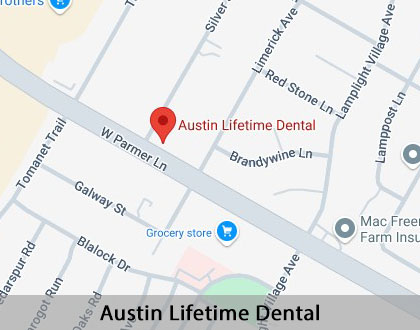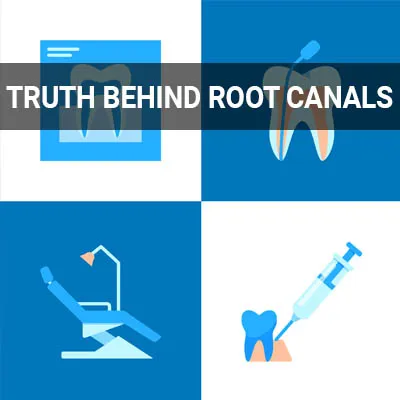Types of Dental Root Fractures Austin, TX
Like any part of the body, your teeth will start to show signs of wear and tear over the years. Sometimes that can come in the form of a dental root fracture. Root fractures are when a tooth crack reaches into the deepest layers of the tooth. They may happen in any direction and generally fall into two categories: vertical and oblique fractures.
If you suspect you may have a root fracture, do not wait to see the dentist. Treatment is available for dental root fractures at Austin Lifetime Dental in Austin and the surrounding area. To learn more about the types of dental root fractures and the various treatments we provide, call us at (512) 387-7937 to schedule a consultation.
Layers of the Teeth
Teeth consist of several layers and include four types of tissues. Enamel, dentin, and cementum make up the hard tissues. The pulp, which contains the nerves, blood vessels, and connective tissues, is soft tissue.
The part of the tooth that is visible in the mouth is called the crown. The crown consists of a hard outer shell called enamel. The tooth root spreads down from the crown into the gum line and jawbone, holding your tooth in place.
The second layer is called the dentin, which contains the pulp chamber at the tooth center. Extending down from the pulp chamber and into the jawbone is the root canal, a passageway for nerves and blood vessels. When root fractures extend this far, it is important to see a dentist for treatment.
“Teeth consist of several layers and include four types of tissues.”
Types of Dental Root Fractures
A tooth fracture occurs when there is a break in the hard shell of a tooth. Although the enamel acts as a shield against disease and bacteria, a fracture can compromise this protective layer. If a crack is deep enough, germs can penetrate the pulp cavity and cause an infection.
There are several types of dental root fractures, including:
- Oblique subgingival fractures
- Oblique supragingival fractures
- Oblique root fractures
- Vertical apical fractures
- Vertical furcation fractures
- Vertical root fractures
“Although the enamel acts as a shield against disease and bacteria, a fracture can compromise this protective layer.”
Oblique Fractures
An oblique fracture runs across the length of the tooth and presents in three categories.
Supragingival
A crack that occurs across the tooth length above the gum line is called an oblique supragingival fracture. While there may not be immediate discomfort, it can lead to an infection if left untreated. In addition, since this type of fracture typically involves the tooth surface, continuing to chew with this fracture type will eventually exacerbate the condition.
Subgingival
An oblique subgingival fracture is when the crack involves more of the tooth. It may even extend down the root, below the gum line, and into the jawbone. You can expect intense pain with this type of fracture to the point where it will be hard to eat or speak. This kind of root fracture can also involve the nerves of the tooth.
Oblique Root Fracture
An oblique root fracture is a crack limited to the roots of the teeth, leaving the top portion of the tooth unaffected. The fractured root presents totally below the gum line and sometimes totally within the bone. The location of this type of fracture will determine whether or not the tooth can be restored.
“An oblique fracture runs across the length of the tooth and presents in three categories.”
Check out what others are saying about our dental services on Yelp: Types of Dental Root Fractures in Austin, TX
Vertical Fractures
A vertical root fracture is when the tooth has a crack running from top to bottom. These fractures start at the root of the tooth and run toward the crown. Since this type of fracture does not typically exhibit any signs or symptoms, it can go unnoticed.
The different types of vertical root fractures include:
Furcation
A vertical furcation fracture involves a crack that extends to the tooth where it splits into two or more separate roots. The nerve is often involved in this type of crack. This is a painful type of fracture and will make the tooth virtually impossible to use.
Apical
A fracture that occurs directly down the middle of the tooth and root is called an apical fracture. This is a painful fracture that will require the patient to come in for a dental appointment. Sometimes a root canal can be used to save the tooth.
Vertical Root Fracture
A vertical root fracture is when part of the tooth root breaks off. This is often due to brittle roots from nerve death in the tooth. A previous root canal procedure can also cause this kind of fracture.
Vertical fractures often occur in weak teeth or teeth with previous dental treatment like a root canal or crown. However, healthy teeth can get vertical fractures from chewing on hard items such as ice. Along with a root canal, vertical fractures can sometimes be treated with a unique type of cement to bond the teeth and prevent the fracture from getting worse.
“A vertical root fracture is when your tooth has a crack running from top to bottom.”
Questions Answered on This Page
Q. What are the types of dental root fractures?
Q. What are the layers of the teeth?
Q. What are the types of oblique fractures?
Q. What are the types of vertical fractures?
People Also Ask
Q. How common are root canals?
Q. Why would a tooth need to be extracted?
Q. How do lifestyle choices affect dental health?
Q. What happens during root canal treatment?
Q. What are the options when a tooth cannot be repaired?
Q. What are some of the signs indicating a need for tooth extraction?
Frequently Asked Questions
Q. How does a root fracture happen?
A. Root fractures can result from a traumatic injury or can happen in teeth with previous procedures like a root canal or crown. Healthy teeth can also be subject to cracks by chewing on hard materials and foods like popcorn kernels. Your treatment will depend on the complexity of the situation and the long-term prognosis of the tooth.
Q. What are the different types of root fractures?
A. There are vertical and oblique or horizontal fractures. Oblique fractures run side to side along the tooth and only make up about 3% of dental injuries. Vertical fractures start at the root and progress up toward the crown.
Q. What are some of the symptoms of root fracture?
A. Not all root fractures present symptoms, leaving them undetected if you do not see the dentist regularly. When there are symptoms, they can include discomfort or pain when biting or chewing food, sensitivity to hot and cold, and gum swelling. These symptoms may also come and go.
Q. How are root fractures treated?
A. The severity of the crack will determine the treatment plan. Sometimes, you can stabilize the tooth, but you will need a root canal if the fracture reaches the pulp. In some cases, the root fracture may be so severe that you will need a tooth extraction.
Q. What happens after treatment for a tooth fracture?
A. Following the treatment, the patient will need to be careful with what they eat. This way, the tooth can continue to heal properly. We will also go over the necessary care techniques the patient can take at home to further the recovery process.
Endodontic Terminology
Call Us Today
Fractures are common and painful problems that require treatment as quickly as possible. Austin Lifetime Dental can help find the right treatment option for you. Call us at 512-387-7937 to schedule an appointment or learn more about our services.
Helpful Related Links
- American Dental Association (ADA). Glossary of Dental Clinical Terms. 2025
- American Academy of Cosmetic Dentistry® (AACD). Home Page. 2025
- WebMD. WebMD’s Oral Care Guide. 2025
About our business and website security
- Austin Lifetime Dental was established in 1986.
- We accept the following payment methods: American Express, Cash, Check, Discover, MasterCard, and Visa
- We serve patients from the following counties: Travis County and Williamson County
- We serve patients from the following cities: Austin, Round Rock, Ceder Park, Pflugerville, Manor, Georgetown, Leander, Hutto, Liberty Hill and Wells Branch
- Norton Safe Web. View Details
- Trend Micro Site Safety Center. View Details
Back to top of Types of Dental Root Fractures











